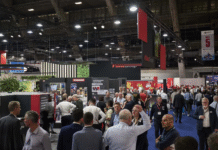Facing the need to cut costs and increase production output, automation and optimization of packaging processes has fast moved into the focus of manufacturers. The use of collating and cartoning systems as stand-alone modules or integrated into production lines allows further savings of time and personnel. Cutting, folding and forming requirements have become more precise as changeover times have become faster and more flexible.
Reducing errors – a pre-requisite for efficiency
The primary requirement for productivity enhancement is to minimize errors at every step of the entire packaging value chain. Arun Pundir, director of Aerodry Plastics Automation, says, “The entire process of automation aims at reducing errors and, when they do occur, to fix them as quickly as possible with minimal scrap generation. Over the past five years, packaging machines require low-maintenance and have become upgradable to accommodate new products and higher production goals. As man-made errors are now being taken care of to a large extent, the industry stands to gain a lot with the use of process automation through use of quality equipment. This not only will prevent wastage of expensive raw materials but also ensure higher productivity with less manpower.”
With fewer rejections and higher productivity, process automation in the extrusion process through the use of right auxiliary equipment provides assured profits, and moreimportantly, enhances one’s brand image as well as trust of consumers. Labelling machines require precise positioning and torque, often at very high speeds. As products come down the line by the hundreds every minute, labels need to be applied accurately and with the right pressure to avoid smearing, peeling, tearing or product damage. Depending on the label material and adhesive, even a tiny variation in velocity or timing can cause errors that waste material and bring production to a halt. Better motion can do more than increase productivity and minimize scrap. “Most advanced labelling machines today use direct drive servomotors and multi-axis controls to eliminate mechanical linkages, reducing floor space and maintenance requirements. Machines can also be designed in a modular fashion to accommodate a wide range of product requirements and they can incorporate safety functions and intelligent features such as smart indexing, push button changeover and more,” says Pundir.
The form-fill-seal processes have several motion requirements. Packaging films need to be pulled through the machine with positive control and minimal stress. This results in complex cutting and forming processes being performed consistently at high speeds. As products are required to be moved in and out of the sealing process rapidly to allow correct dwelltime without slowing down production, there is a need for perfect synchronization within mould parts. As the near-final step in packaging, the cartoning processes need to be coordinated with blister packing, laminating, wrapping and other processes, along with the infeed, sorting, conveying and other end-of-line operations the system requires. Orchestrating all these processes requires precise positioning within and across each process, often at high speeds. Advanced machines today provide torque, precision and simple optimization needed to keep cartoning and related processes moving efficiently and in perfect synch.
Automation trends in packaging
Packaging machinery is bracing up to meet global equipment standards in response to escalating productivity and efficiency demands of both industrial and retail markets. Automation suppliers are partnering with clients, customers, and engineering firms, to deliver sophisticated systems with advanced control architectures. A growing trend of integration, automation and standardization is predominant in the machinery manufacture sectors. “In the context, increasing deployment of robotics and related technology is a welcome step in the effort to introduce complete automation in the packaging process. Robots, which are capable of efficiently handling heavy lifting activities on the packaging floor, are finding increased takers. Packaging and palletizing robotic systems witnessed a healthy increase of 100% in sales over the past decade,” says Pundir.
The purpose of automation has shifted from just increasing productivity and reducing costs to broader issues such as increasing safety, quality, flexibility in manufacturing processes and less downtime which involves material change, colour change and mould change. Further, the use of advanced technology with wireless networks and good communication systems are applied to solve complicated problems in consultation with the experts even in the remotest area to save downtime.
Automation component suppliers
India is a large user of packaging filling and sealing machinery with a large number of multinationals and home-grown manufacturers as well – many of whom will be at interpack in Düsseldorf. For this reason, all the world leaders in automation controls in multi-touch panels, components, vision systems and robotics are present in the country right from B&R Automation, Delta, ABB, Siemens and Rockwell Automation. Closed loop vision and inspection systems are being assembled and serviced within the country with components from QTI and QI as well as E+L, BST Sayona and several others. Local capabilities, apart from component supply, include training in system and software design to help machine manufacturers implement automation solutions.











